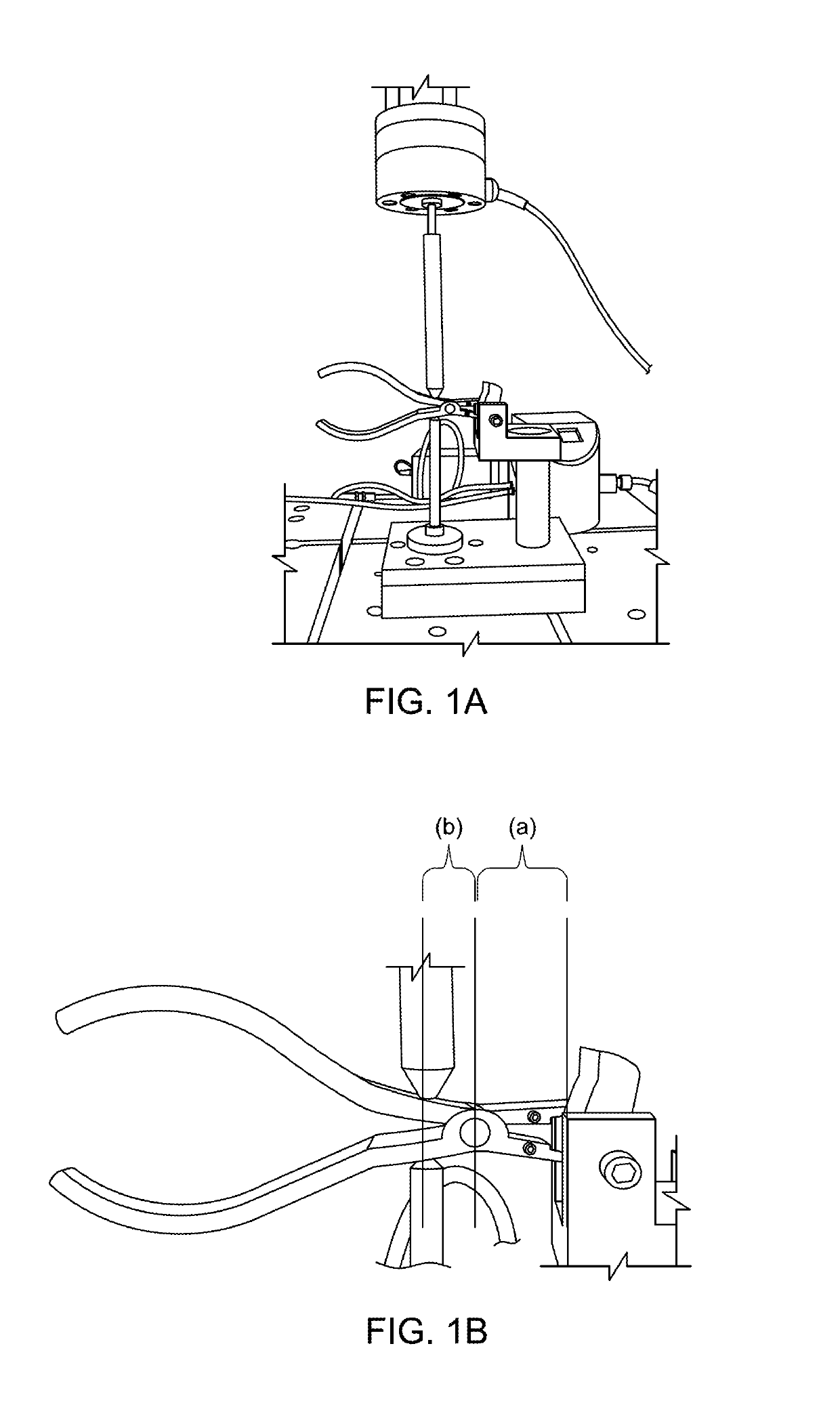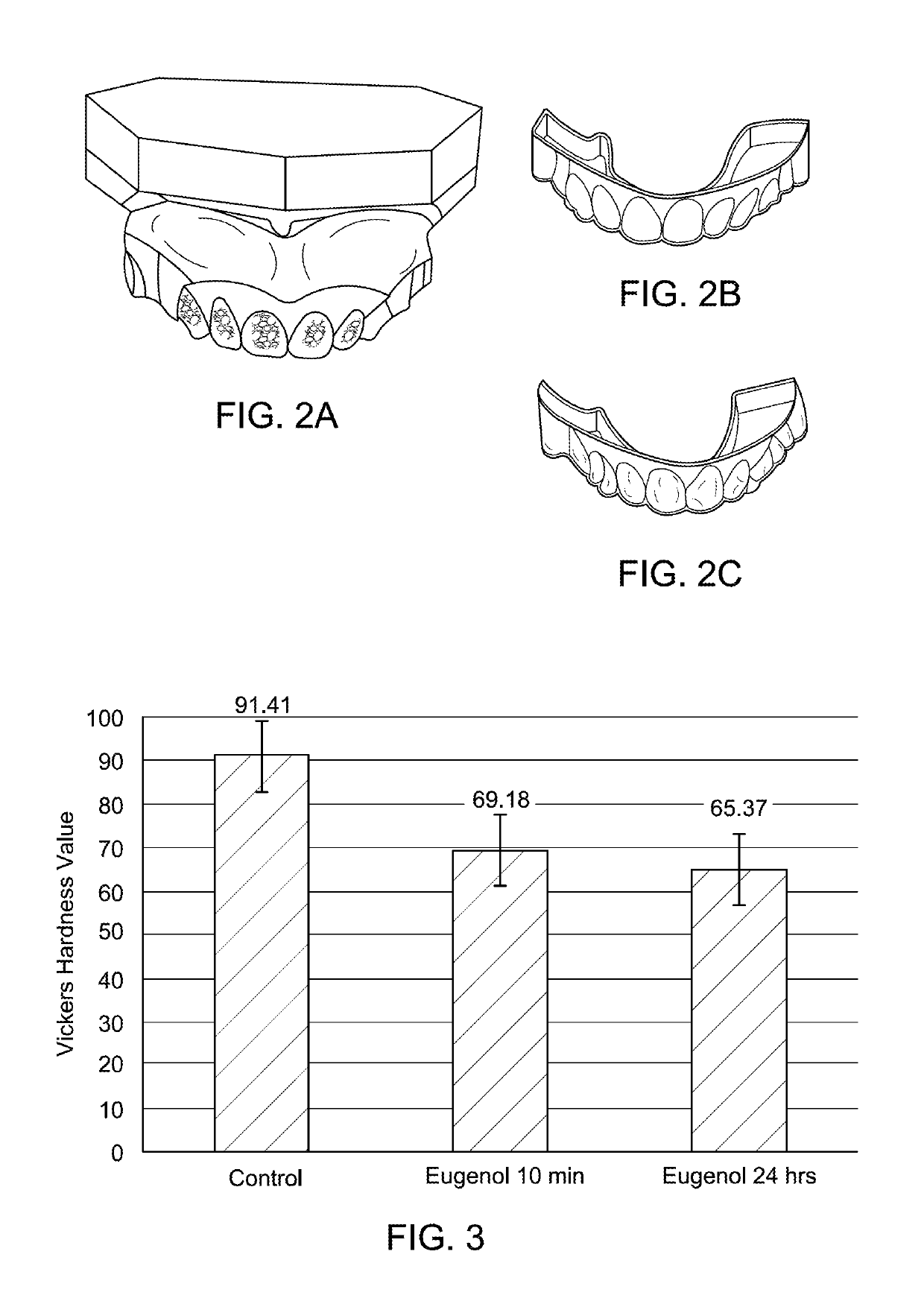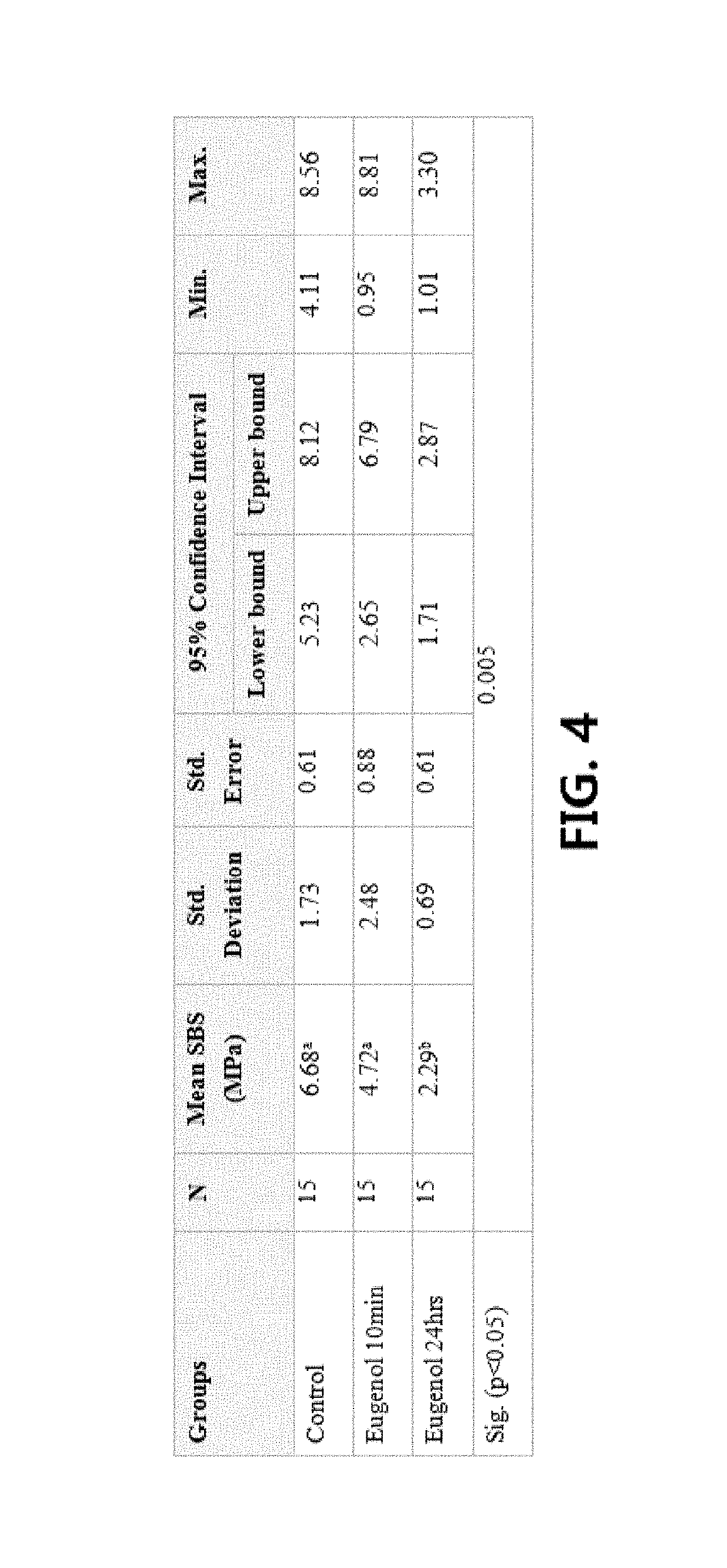Method for debonding of orthodontic metal brackets with eugenol emulgel
a technology of eugenol emulgel and metal brackets, which is applied in the field of debonding of orthodontic metal brackets with eugenol emulgel, can solve the problems of significant risk, conventional debonding procedures are risky, and the process of removing brackets and the bonding cement or adhesive is relatively painless, so as to reduce the microhardness
- Summary
- Abstract
- Description
- Claims
- Application Information
AI Technical Summary
Problems solved by technology
Method used
Image
Examples
embodiments
[0066]Although specific embodiments have been illustrated and described herein, any arrangement calculated to achieve the same purpose may be substituted for the specific embodiments shown. This disclosure is intended to cover any and all adaptations or variations of various embodiments. Combinations of the embodiments described herein and other embodiments not specifically described herein will be apparent to those of skill in the art upon reviewing the above description.
[0067]One embodiment of the invention is directed to a composition having a pH ranging from pH 6.0 to 8.0 comprising eugenol, at least one crosslinked polymer of acrylic acid or at least one other gelling agent, and at least one polysorbate or at least one other surfactant; wherein the amount of eugenol is sufficient to reduce the Vickers hardness of a cured or hardened orthodontic bonding adhesive cement or resin to a value of 70 or less after contacting it for at least 10 mins and / or is sufficient to reduce debon...
example 1
Eugenol Emulgel Preparation
[0083]An emulgel was prepared from 10 wt % clove oil, 27 wt % polysorbate 20 (TWEEN 20®), 13 wt % propylene glycol, 1.5 wt % crosslinked polyacrylate polymer and 48.5 wt % water. The crosslinked polyacrylate polymer was CARBOPOL 934® which is incorporated by reference to http: / / _www.surfachem.com / carbopol-934, last accessed Jul. 23, 2017.
[0084]A solubilized system gel was prepared by first mixing propylene glycol with clove oil to produce an oily phase. An aqueous phase was then prepared by incorporation of TWEEN 20® with a portion of deionized water. For the preparation of gelling phase, CARBOPOL 934@ was dispersed using an IKA UTRATURAX T10® (Switzerland) homogenizer and neutralized to a pH 6.0-6.5 with 0.5 M sodium hydroxide. The aqueous phase was added drop wise to the oily phase while mixing until a clear homogenous solubilized system formed. The gelling phase was then added slowly to solubilized system until a homogenous clear / opalescent gel formed.
example 2
Application of the Eugenol Emulgel on Bonded Dental Brackets
[0085]Bonded brackets to the teeth were fixed onto a dental model (Nissin-Dental, Tokyo, Japan) using high fusing impression compound. Alginate impressions were made for all models having the teeth with bonded brackets attached to it. Casts were prepared and each tooth bearing bracket on the dental cast was blocked with paraffin wax to obtain space for eugenol-containing emulgel delivery. A polypropylene sheet (Easy Vac-Gasket, 3A MEDES, Korea) was vacuum-adapted to each cast with a vacuum-forming machine (Henry Schein, Henry Schein Inc., NY, USA). From the vacuum adapted sheet, individual trays were made to fit onto the tooth surfaces to cover the complete arch of the teeth on the model and were trimmed to be approximately 1 mm above the gingival margin. The eugenol emulgel was applied to the brackets bonded to the teeth using the customized trays and then the whole model was placed in a container having distilled and plac...
PUM
| Property | Measurement | Unit |
|---|---|---|
| viscosities | aaaaa | aaaaa |
| viscosity | aaaaa | aaaaa |
| viscosity | aaaaa | aaaaa |
Abstract
Description
Claims
Application Information
 Login to View More
Login to View More - R&D
- Intellectual Property
- Life Sciences
- Materials
- Tech Scout
- Unparalleled Data Quality
- Higher Quality Content
- 60% Fewer Hallucinations
Browse by: Latest US Patents, China's latest patents, Technical Efficacy Thesaurus, Application Domain, Technology Topic, Popular Technical Reports.
© 2025 PatSnap. All rights reserved.Legal|Privacy policy|Modern Slavery Act Transparency Statement|Sitemap|About US| Contact US: help@patsnap.com



